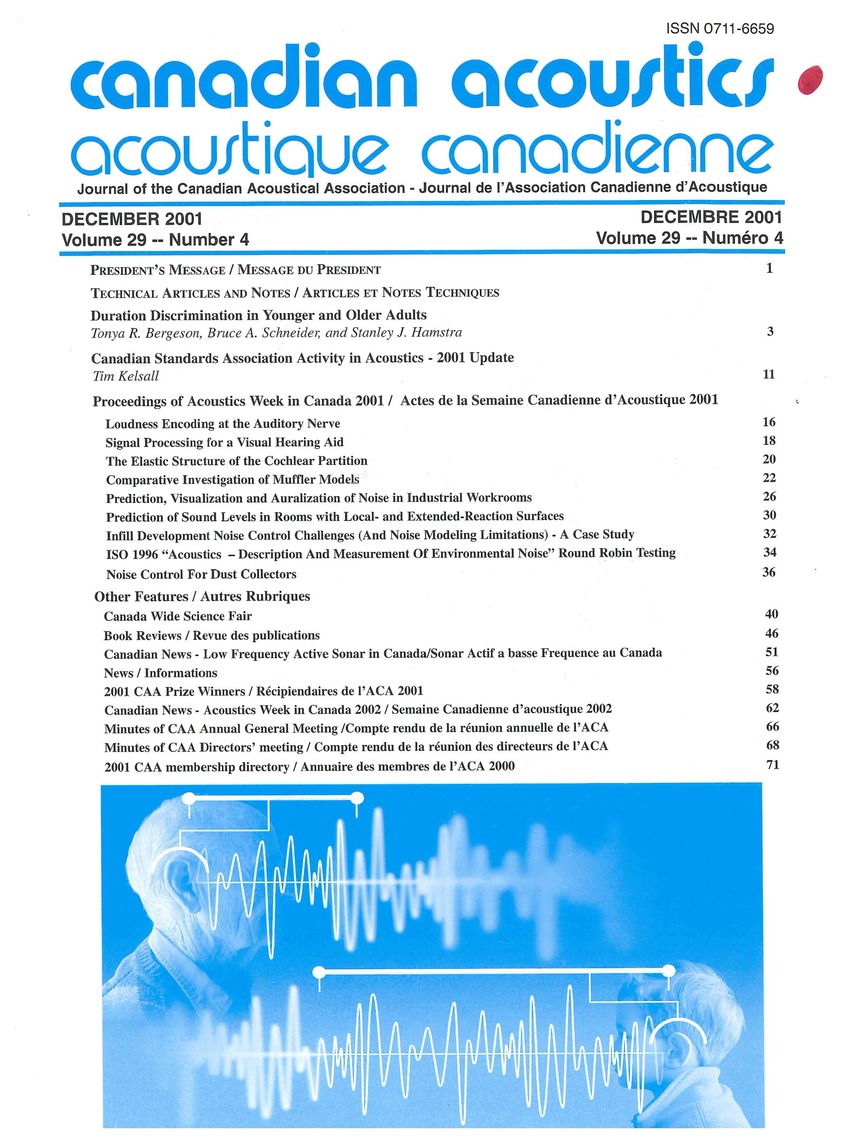The elastic structure of the cochlear partition
Mots-clés :
Acoustic distortion, Acoustic noise, Audition, Biological organs, Cells, Diagnosis, Molecular structure, Molecular vibrations, Pathology, Tissue, Acoustic Emission, Cochlear partition, Cochlear sensory epithelium, Dead ears, Distortion product acoustic emission, Eardrum, Elastic structure, Hearing dysfunction, Human ear, Motile hair cellRésumé
The inclusion of structural elasticity amongst the resonant sections of the standard cochlear model is examined. An immediate implication of adding such mechanics is the production of realistic 2f1-f2 distortion product octoacoustic emissions (DPOAEs) with properties similar to those found in clinical recordings. Since the structural coupling is not dependent on any active mechanism, simulation provides an answer as to how dead ears produce cubic DPOAEs.Fichiers supplémentaires
Publié-e
Comment citer
Numéro
Rubrique
Licence
Author Licensing Addendum
This Licensing Addendum ("Addendum") is entered into between the undersigned Author(s) and Canadian Acoustics journal published by the Canadian Acoustical Association (hereinafter referred to as the "Publisher"). The Author(s) and the Publisher agree as follows:
-
Retained Rights: The Author(s) retain(s) the following rights:
- The right to reproduce, distribute, and publicly display the Work on the Author's personal website or the website of the Author's institution.
- The right to use the Work in the Author's teaching activities and presentations.
- The right to include the Work in a compilation for the Author's personal use, not for sale.
-
Grant of License: The Author(s) grant(s) to the Publisher a worldwide exclusive license to publish, reproduce, distribute, and display the Work in Canadian Acoustics and any other formats and media deemed appropriate by the Publisher.
-
Attribution: The Publisher agrees to include proper attribution to the Author(s) in all publications and reproductions of the Work.
-
No Conflict: This Addendum is intended to be in harmony with, and not in conflict with, the terms and conditions of the original agreement entered into between the Author(s) and the Publisher.
-
Copyright Clause: Copyright on articles is held by the Author(s). The corresponding Author has the right to grant on behalf of all Authors and does grant on behalf of all Authors, a worldwide exclusive license to the Publisher and its licensees in perpetuity, in all forms, formats, and media (whether known now or created in the future), including but not limited to the rights to publish, reproduce, distribute, display, store, translate, create adaptations, reprints, include within collections, and create summaries, extracts, and/or abstracts of the Contribution.


